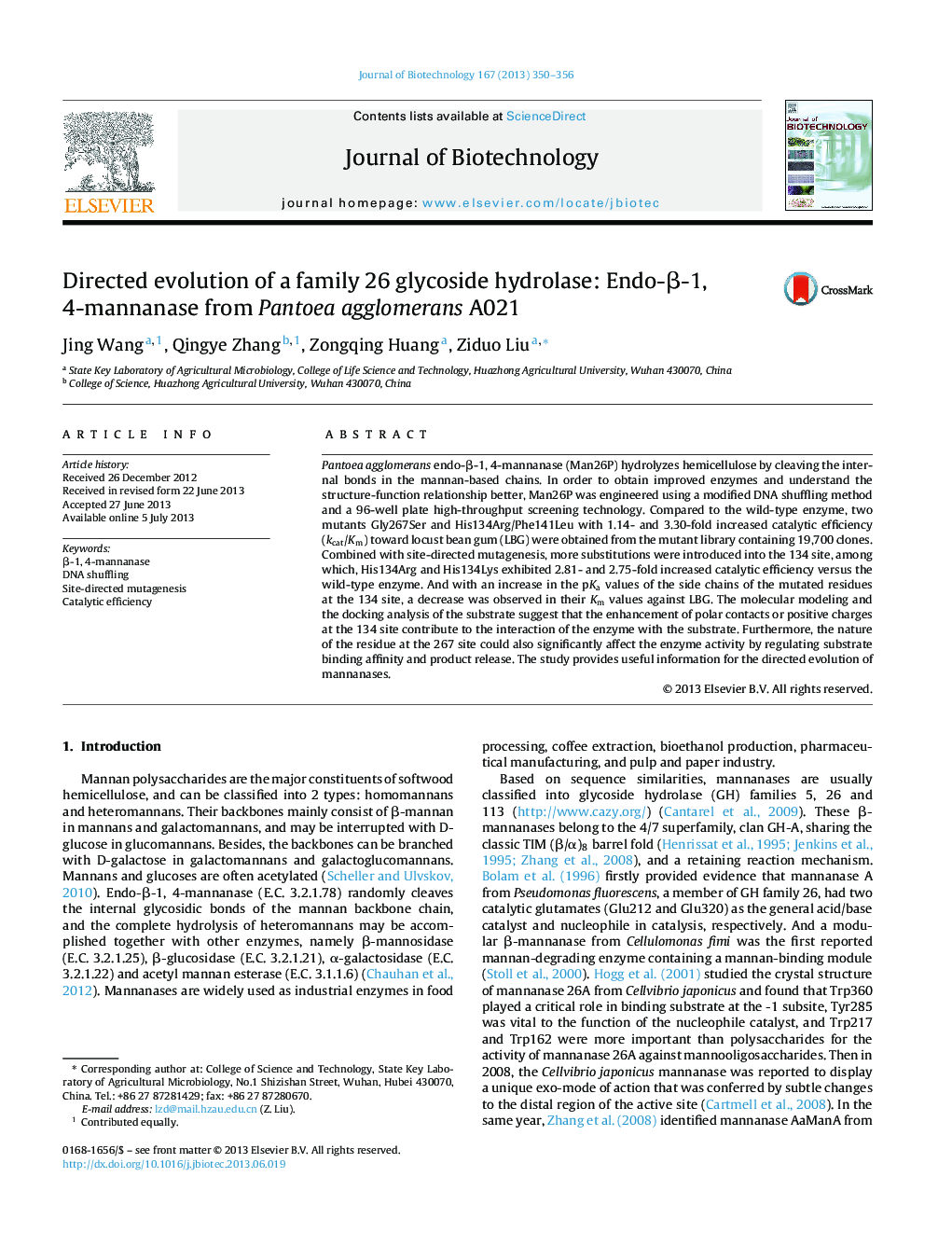| Article ID | Journal | Published Year | Pages | File Type |
|---|---|---|---|---|
| 23501 | Journal of Biotechnology | 2013 | 7 Pages |
•Compared to the wild-type enzyme, several variants with 1.14- to 3.30-fold increased catalytic efficiency (kcat/Km) toward locust bean gum (LBG) were obtained.•The molecular modeling and the docking analysis of the substrate suggested the nature of the residue at the 267 site significantly affect the enzyme activity by regulating substrate binding affinity and product release.•The molecular modeling and the docking analysis of the substrate revealed that enhanced polar contacts or positive charges were more favorable at the 134 site.
Pantoea agglomerans endo-β-1, 4-mannanase (Man26P) hydrolyzes hemicellulose by cleaving the internal bonds in the mannan-based chains. In order to obtain improved enzymes and understand the structure-function relationship better, Man26P was engineered using a modified DNA shuffling method and a 96-well plate high-throughput screening technology. Compared to the wild-type enzyme, two mutants Gly267Ser and His134Arg/Phe141Leu with 1.14- and 3.30-fold increased catalytic efficiency (kcat/Km) toward locust bean gum (LBG) were obtained from the mutant library containing 19,700 clones. Combined with site-directed mutagenesis, more substitutions were introduced into the 134 site, among which, His134Arg and His134Lys exhibited 2.81- and 2.75-fold increased catalytic efficiency versus the wild-type enzyme. And with an increase in the pKa values of the side chains of the mutated residues at the 134 site, a decrease was observed in their Km values against LBG. The molecular modeling and the docking analysis of the substrate suggest that the enhancement of polar contacts or positive charges at the 134 site contribute to the interaction of the enzyme with the substrate. Furthermore, the nature of the residue at the 267 site could also significantly affect the enzyme activity by regulating substrate binding affinity and product release. The study provides useful information for the directed evolution of mannanases.
